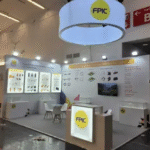When it comes to outfitting teams, building a retail apparel line, or offering premium custom‑branded shirts, polo shirts in a piqué knit are a versatile and profitable choice. This blog dives deep into the world of wholesale piqué polo shirts—what makes them special, how they perform, and why they’re a smart buy for bulk purchase and resale.
1. What Is Piqué and Why It Matter
The term piqué (pronounced “pee‑kay”) refers to a specific weave or knit structure that produces a textured surface with raised ribs, cords or a waffle‑like pattern.
Key fabric characteristics
-
The texture gives extra visual interest and structure, making the shirt look more refined than a plain jersey knit.
-
The weave allows improved air circulation and moisture wicking—so a piqué polo shirt can feel cooler and more comfortable during wear, especially in warmer climates or active use.
-
Durability and structure: Because of the heavier or specialized knit, piqué polos tend to hold their shape better, resist sagging, and maintain a crisp look.
-
Historically, piqué fabric was used in formal shirting and later adopted for the classic polo shirt style.
Why this matters when buying wholesale
When you’re purchasing wholesale polo shirts, these fabric traits translate into better value: higher perceived quality, better performance for wear and corporate/uniform use, and often improved durability (which reduces returns or dissatisfaction). In short: piqué = premium feel at scale.
2. Use Cases: When to Choose Piqué Polo Shirts
Understanding how they’ll be used helps you decide whether piqué polos are the right fit for your wholesale order.
Uniforms & workwear
For staff uniforms, service teams, and corporate wear, you want a look that’s professional yet comfortable. Piqué polos deliver a smart‑casual aesthetic that bridges dress shirt and tee. Because they hold shape well, look crisp with embroidery or logos, and perform well (cooler wear, less showing of sweat), they’re ideal for bulk uniform purchase.
Retail & resale lines
If you’re building an apparel line or branded merchandise, piqué polos give you an elevated product compared to basic jersey polos. That means you can position them at a higher price point, appeal to customers who care about quality, and potentially enjoy better margins while still leveraging wholesale quantity pricing.
Custom branding / promotional items
Piqué polos are excellent for embroidery (company logos, club crests) and corporate gifting. The texture adds depth and the sturdy knit ensures your branding will stay looking sharp over repeated wear and washing.
Active / sport‑inspired polos
Because of their breathability and moisture‑management traits, piqué polos are also used in golf apparel, social sports teams, or outdoor events. If you’re buying wholesale for such use‑cases, consider piqué blends that include performance enhancements.
3. What to Check When Buying Wholesale Piqué Polo Shirts
When you’re ordering in bulk, quality and specification matter. Here are the key factors to check:
Fabric composition & weight
-
Is it 100% cotton, or a blend with polyester/spandex? Each has trade‑offs: cotton = natural feel and breathability; blends = durability, wrinkle resistance, often lower cost.
-
What is the fabric weight/gsm? Heavier knit gives more structure; lighter weight gives more drape and comfort.
-
Does the fabric specification explicitly state “piqué knit/weave”? Because not all “polo” fabrics are true piqué.
Fabric texture and finish
-
Examine the knit structure: you should see the raised ribs or waffle‑pattern typical of piqué. If it looks flat and smooth like a jersey tee, you might be getting a lower‑grade fabric.
-
How soft is the hand (feel)? Some piqué fabrics can feel rough if low quality.
-
Check for shrinkage/resizing info: Does the supplier pre‑shrink or provide care guidelines?
Fit, sizing and construction
-
Ensure consistent sizing (S, M, L etc) and check for tall sizes or extended sizes if needed.
-
Collar and placket quality matter: A good collar keeps shape; buttons or snap plackets should be secure.
-
Check stitching and seam strength (especially since piqué fabric will have more texture, certain constructs may snag if poor quality).
Customization potential
-
If you’ll be adding embroidery or printing, ask: How does this fabric perform with branding? (Piqué’s texture may impact how printing looks; embroidery is often preferred)
-
Color variety & custom color capability: Wholesale buyers often want multiple colours or seasonal colours.
-
Minimum order quantities (MOQs), lead times and shipping logistics.
Supplier reputation & bulk pricing
-
What’s the price break at different quantities? Are discounts for higher volumes?
-
Are samples available? Before you commit to thousands of units, always check a sample for quality.
-
Shipping, customs (if you’re importing), and cost of delivery to your region should be factored in.
-
Review supplier’s return policy, defect rate and responsiveness.
4. Advantages & Potential Challenges
Advantages
-
Perceived Quality: Piqué polos look and feel more premium than basic knit shirts—this translates to higher acceptability for corporate uniforms or retail use.
-
Durability: The structure holds up well over wear and wash, meaning fewer replacements and better customer satisfaction.
-
Versatility: Suitable for uniform, sports, casual retail—makes it a flexible inventory piece.
-
Branding/Customization Friendly: With proper fabric, you can brand well, and customers perceive value.
-
Comfort/Performance: Many piqué fabrics offer breathability and manage sweat better than flat knits.
Challenges
-
Higher Cost: Because the knit is more complex and the fabric can be heavier, cost per unit may be higher than basic polos.
-
Printability/Texture: The texture of piqué can interfere with certain types of printing (especially direct‑to‑garment or flat ink prints); embroidery is often the safer bet.
-
Fabric Quality Variation: Not all piqué fabrics are equal—cheap versions may feel rough, shrink heavily, or lose structure quickly.
-
Colorfastness & Care: Because of the knit, some lower‑quality piqué may fade or snag; care instructions and quality control matter.
5. Sourcing Smart: Tips for Wholesale Buyers
Here are practical tips for you as a wholesale buyer to maximize value.
1. Order samples across colours/weights
Before placing a large order, request fabric swatches or finished shirt samples. Test wash, wear, branding (logo) and feel.
2. Negotiate tiers and options
Ask for volume discounts, extended size breaks, custom colours, and bundling of multiple styles. If you anticipate repeat orders, lock in better pricing.
3. Understand lead times and stock
Bulk orders often take longer. Check stock availability, shipping time (especially for international suppliers) and potential customs/import delays.
4. Consider blending performance features
If your buyers need polos for outdoor events or sports‑use, consider piqué blends with moisture wicking, UV protection or stretch. Often this will cost more but can be justified.
5. Branding alignment
If you’re providing branded polos (uniforms or merchandise), align fabric choice with branding expectations. Premium clients expect premium feel. Ensure logo placement, stitching quality and branding method (embroidery vs print) work well with piqué.
6. Factor in cost vs margin
Calculate total landed cost (fabric, manufacturing, shipping, customs, any QA/returns) and then set your resale or uniform budget accordingly. Because piqué polos often allow higher pricing or premium margin, the extra cost can be justified.
7. Care & durability messaging
When you supply or resell these shirts, communicate care instructions (wash cold, inside out, avoid fabric softener, etc) and highlight durability benefits. This builds perceived value and reduces returns.
6. Market Trends & Why Now Is a Good Time
-
Corporate and uniform apparel markets continue to demand comfortable yet professional wear—polo shirts remain a mainstay.
-
With global temperatures rising and workplaces adopting more business‑casual wardrobes, breathable textured fabrics like piqué gain advantage over heavier dress shirts.
-
The shift to branded merchandise and retail apparel lines means more businesses are looking for versatile polos they can customise. Piqué polos fit that niche.
-
Supply chain disruptions in basic apparel have pushed buyers to look for higher‑quality, longer‑lasting items—so investing a bit more for durable piqué can reduce longer‑term cost of ownership.
7. How to Position & Sell Wholesale Piqué Polo Shirts
If you’re selling or distributing these shirts, here are some positioning ideas:
For uniforms/workwear
“Upgrade your team’s look with breathable, durable piqué polos that hold shape, manage moisture and keep your staff looking sharp through every shift.”
For corporate gifting/membership/club apparel
“Give your members or clients a premium‑feel polo with a textured knit that elevates the brand. Perfect for golf days, corporate retreats or club kits.”
For retail/resale
“Offer a premium polo without premium pricing. Soft, durable piqué fabric offers classic styling and everyday performance, ideal for your store’s core line.”
For custom branding/promotional
“Custom branding on a piqué polo delivers a more elevated piece—best for clients who want more than a basic tee. Embroidery looks better, prints last longer and customers feel the difference.”
8. Care & Best Practices for End Users
When you supply these shirts to a team or customers, providing care guidance will help maintain quality and reduce returns:
-
Wash inside out, cold or warm—not hot.
-
Use mild detergent; avoid bleach unless white.
-
Avoid heavy fabric softeners: they can build up on textured knit surfaces.
-
Line‑dry or tumble on low; high heat can cause shrink or distortion.
-
When ironing is needed, iron inside out on low‑medium heat or use a steamer to freshen collar and placket.
-
Store on a hanger or folded neatly to avoid shoulder bumps; strong collars do better on hangers.
9. Final Thoughts: Is It Worth It for Your Business?
For anyone buying wholesale polos in large quantity—whether for uniform programs, branded merchandise or retail lines—piqué knit polos represent a meaningful upgrade. While the per‑unit cost may be slightly higher than basic jersey polos, the enhanced feel, structure, durability and look often justify the investment.
If your target market or use‐case demands quality, comfort, branding potential and longevity, then yes—piqué polos are definitely worth it. When you combine smart sourcing (good supplier, clear specs, volume discounts) with effective positioning, you’ll build value for your customers and margin for your business.



